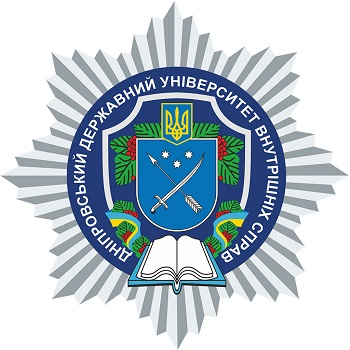UNIVERSAL INTERNATIONAL LEGAL QUALIFICATION OF CRIME OF DEPORTATION: GROUNDS OF APPEARANCE
DOI:
https://doi.org/10.31733/2078-3566-2022-6-619-623Keywords:
Crimean Tatars, deportation, derogation, freedom of movement, genocide, itarnational crimes, war crimes.Abstract
The abstracts cover the issue of legal practice of deportation proceedings as an international crime. The article highlights aspects of the qualification of the crime of deportation in terms of global, universal standards of international criminal law, international humanitarian law and international human rights law. The global recognition of the illegality of deportation and the understanding of its qualification as a criminal act have been proven on the example of relevant agreements uniting the civilized countries of the world. It has been proven that the prohibition of collective deportation directly follows from the requirements of the Convention on the Prevention and Punishment of the Crime of Genocide, the Universal Declaration of Human Rights and the International Covenant on Civil and Political Rights. It was proved that the relevant requirements of the Covenant were explained in General Comment No. 27 of the UN Human Rights Committee in 1999. The Comments on freedom of movement enshrined in the Covenant stated that in principle, nationals of a State are always lawfully present in the territory of that State and that the State party has an obligation to ensure that the rights to freedom of movement are protected against interference from not only the state, but also private individuals. This directly affects the measurement of the known illegality of the deportation of its own citizens and the fact that the state is responsible for deportations carried out by “non-state structures”, for example, mercenaries, terrorist groups or with the involvement of private transport structures, “volunteers”, etc. Article points on part 7 of the General Comment that clearly states that in accordance with Article 12 of the Covenant the right to reside in any place of one’s choice within the territory of the respective state includes protection against all forms of forced displacement within the country, which directly implies the need for protection against criminal deportation. Part 12 of the General Comment adds that the conditions under which rights may be limited must be stipulated in the legislation itself, therefore state reports should indicate the legal norms on which the restrictions are based, and if these restrictions, which are not provided for by legislation or do not meet the requirements of the Covenant, they are a violation of the freedom of movement. Article points on part 14 of the General Comment that adds that possible restrictive measures must comply with the principle of proportionality; they must be appropriate for the performance of their protective function; and must be the least restrictive means by which the desired result can be achieved; and they must be proportionate to the interest being protected. According to part 15 of the General Comment, states must ensure that any procedures related to the exercise or restriction of the right to freedom of movement are carried out in the shortest possible time and reasons are given that justify the application of restrictive measures. Therefore, this interpretation of the restrictions on the right to freedom of movement allowed by the Covenant makes it impossible to understand collective deportation as such a legitimate restriction of the corresponding right. The relevant prescriptions of universal international treaties are important in measuring the right to freedom of movement and the limits of legitimate restrictions of such a right; clarification of these requirements of international law took place in the documents of the UN Human Rights Committee.
References
1. Aggelen van Johannes. Preamble of the United Nations Declaration of Human Rights. Denver journal of international law and policy. 28 (2). Spring 2000 P. 129-144.
2. Convention on the Prevention and Punishment of the Crime of Genocide, 9 December 1948. URL: https://ihl-databases.icrc.org/ihl/INTRO/357.
3. Convention on the Prevention and Punishment of the Crime of Genocide: Status. URL : https://treaties.un.org/Pages/ViewDetails.aspx?src=IND&mtdsg_no=IV-1&chapter=4&clang=_en.
4. Freedom of movement (article 12) UN Human Rights Committee, General Comment No. 27 (67). CCPR/C/21/Rev.1/Add.9 Addendum. 1 November 1999. URL: https://daccess-ods.un.org/tmp/598016.679286957.html.
5. Genocide: A Commentary on the Convention. The Yale Law Journal. Vol. 58, No. 7. June, 1949. P. 1142-1160.
6. International Covenant on Civil and Political Rights, 16 December 1966. URL : https://www.ohchr.org/en/instruments-mechanisms/instruments/international-covenant-civil-and-political-rights.
7. Langley Winston E. Encyclopedia of human rights issues since 1945. London: Fitzroy Dearborn Publishers, 1999.
8. Lebor Adam. Complicity with evil: the United Nations in the age of genocide London: Yale University Press, 2006. 352 p.
9. Neier Aryeh War Сrimes : Brutality, Genocide, Terror and the Struggle for Justice. New York: Times Books, 1998. 286 p.
10. Ramcharan B. G. Concept and present status of the international protection of human rights : forty years after the Universal Declaration. Dordrecht : M. Nijhoff Publishers, 1989. 611 p.
11. Schabas William. L. Preventing genocide and mass killings : the challenge for the United Nations. The Hague: Minority Rights Group International, 2006. 34 p.
12. Smith Karen E. Genocide and the Europeans. Cambridge: Cambridge University Press, 2010. 288 p.
13. The genocide convention sixty years after its adoption; ed. by Christoph Safferling and Eckart Conze. The Hague: T.M.C. Asser Press, 2010. 400 p.
14. The UN Genocide Convention: A Commentary: ed. by Paola Gaeta. L. Oxford Commentaries on International Law, 2009. 600 p.
15. Universal Declaration of Human Rights: proclaimed by the UN General Assembly resolution 217 A on 10 December 1948. URL: https://www.un.org/en/about-us/universal-declaration-of-human-rights.

